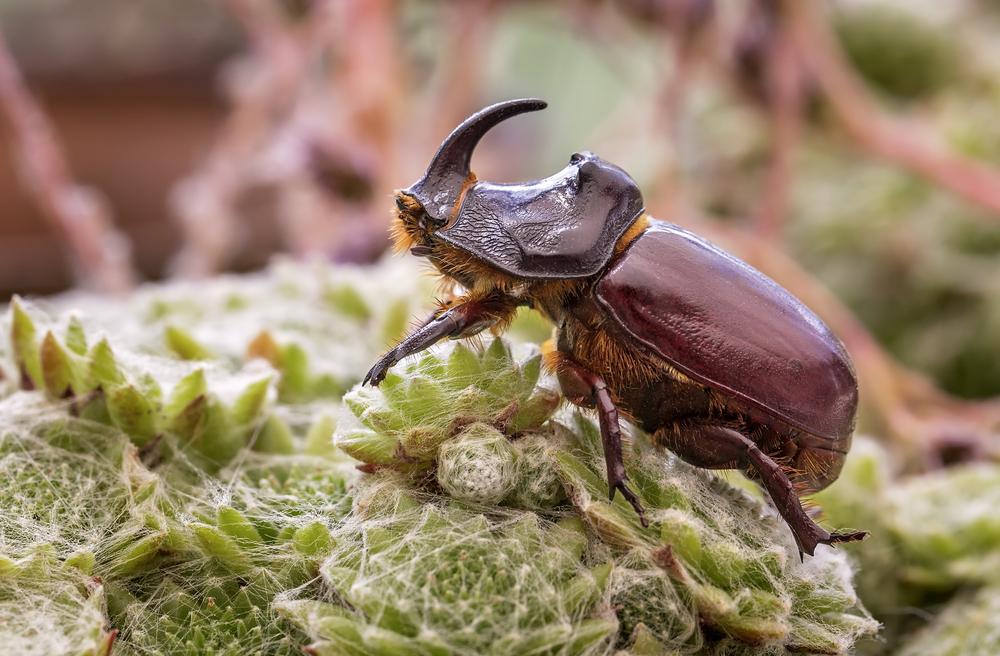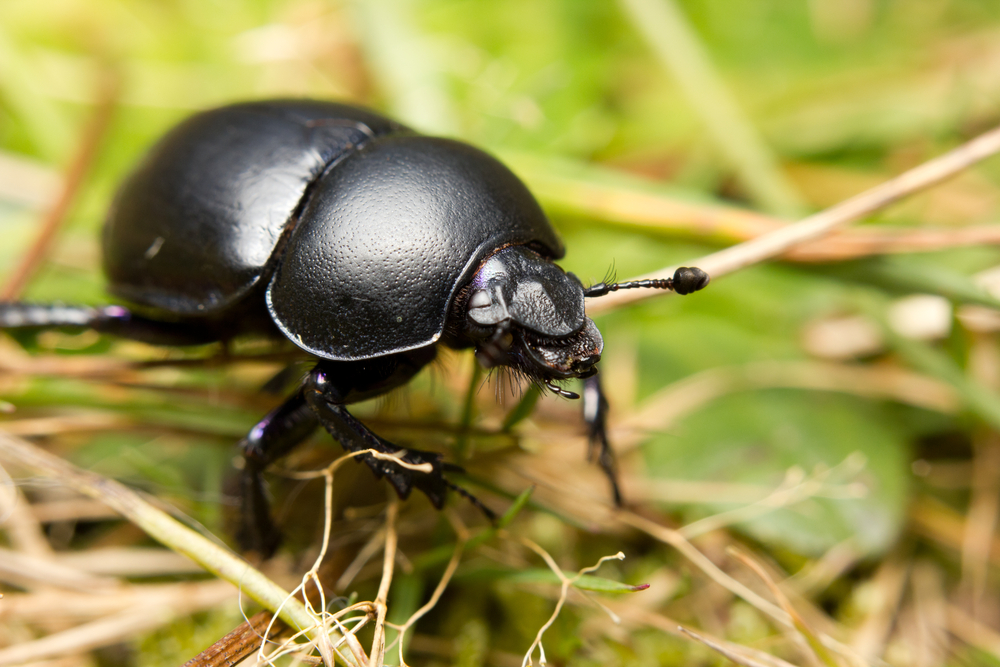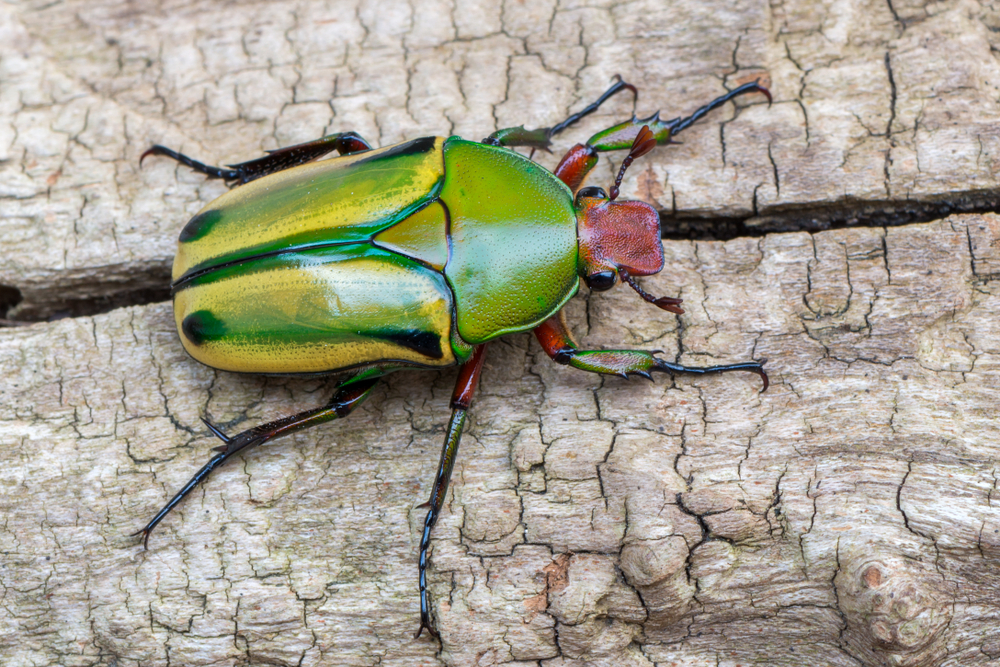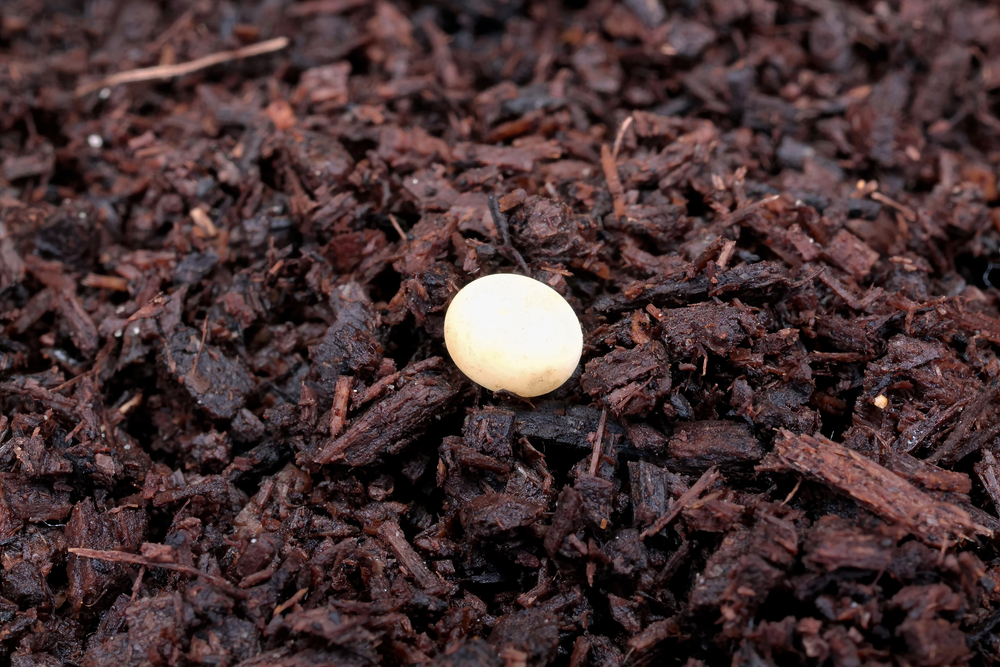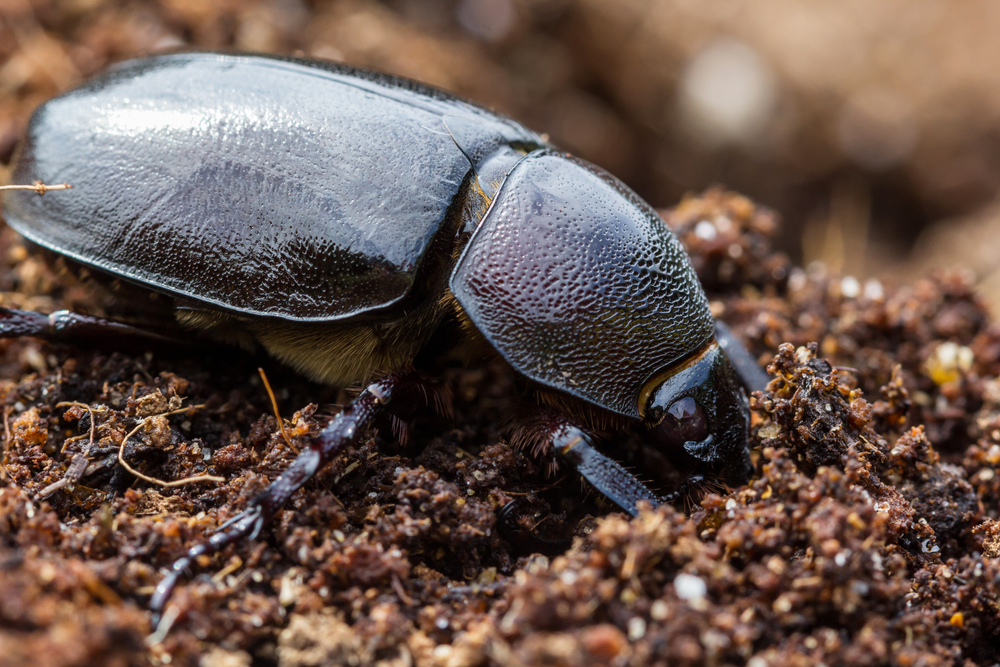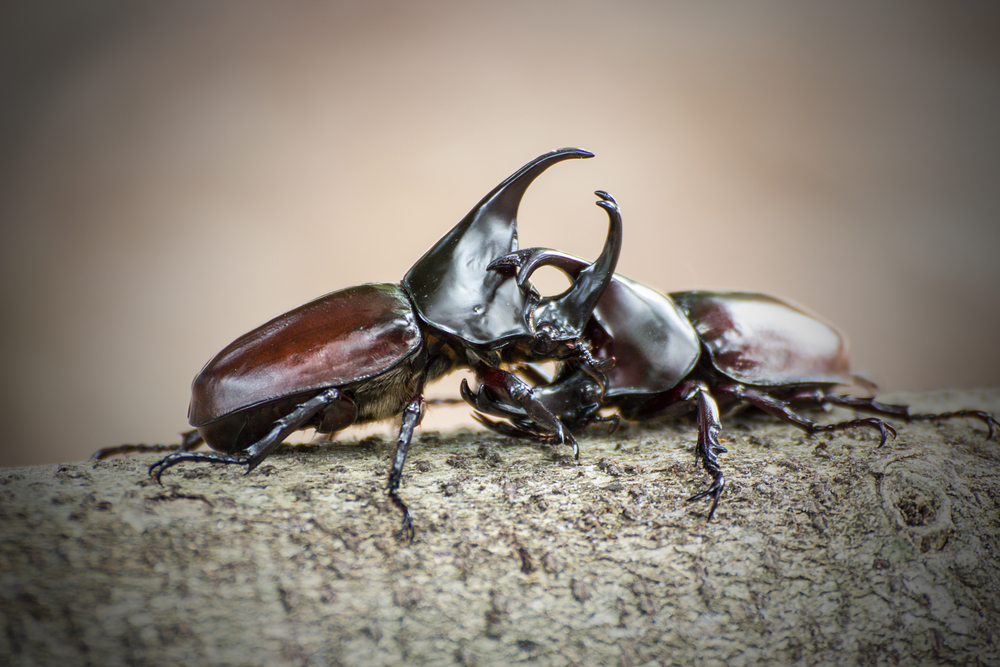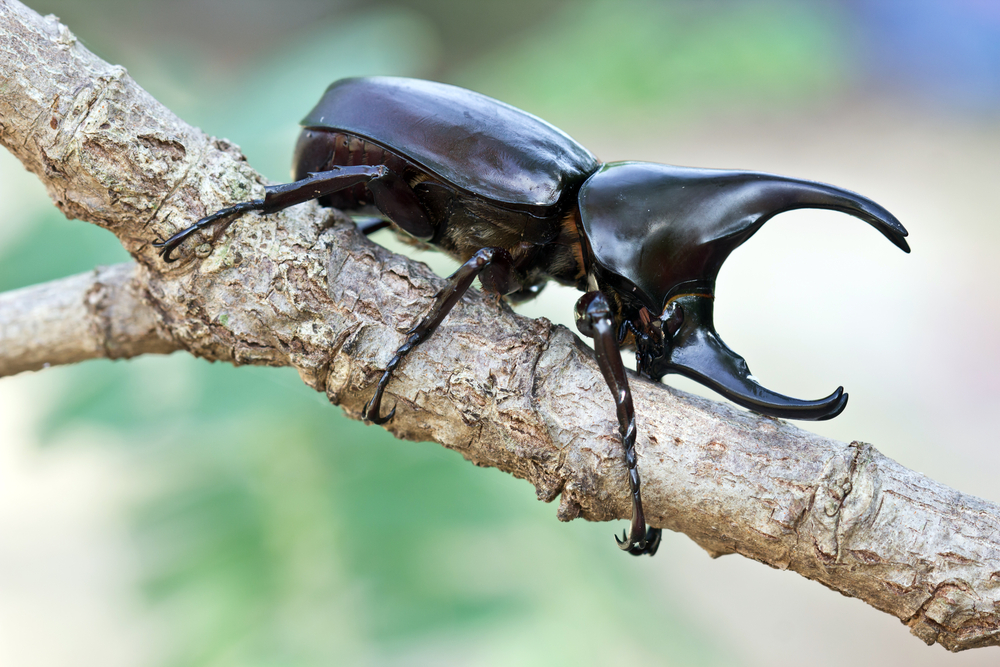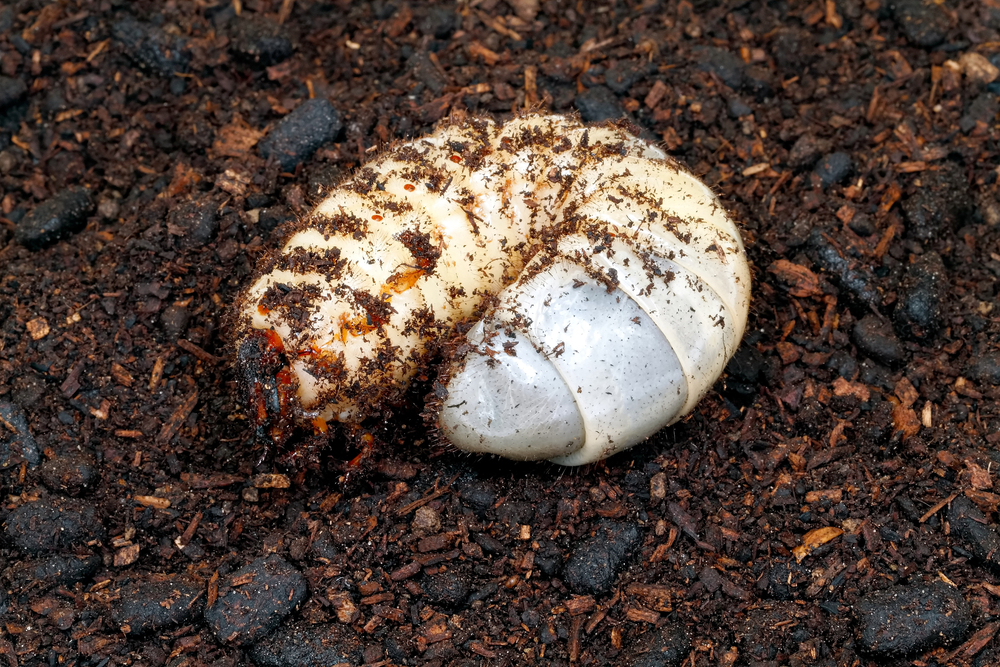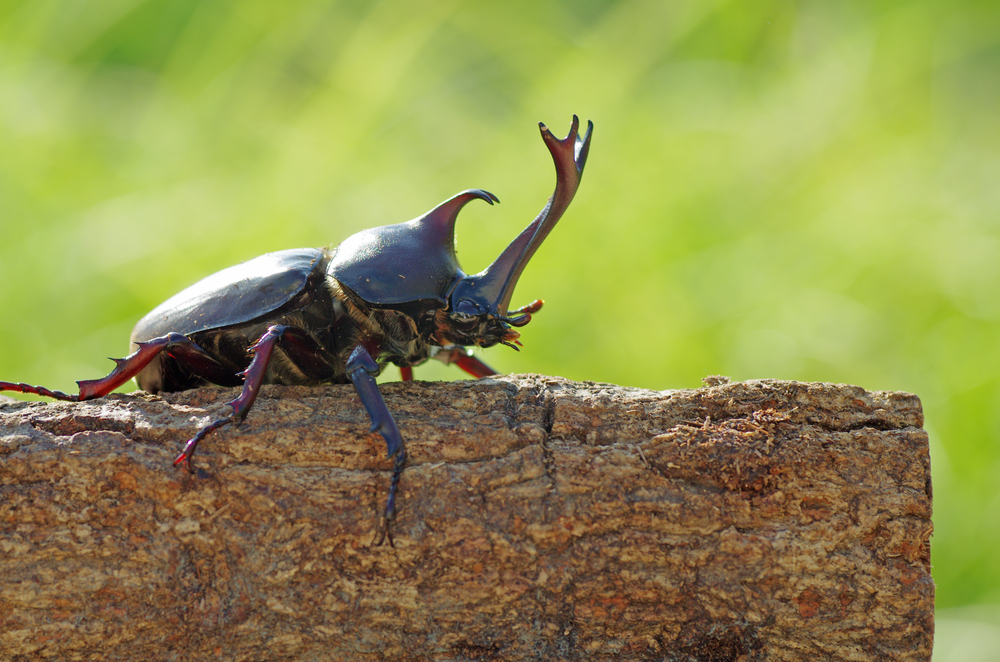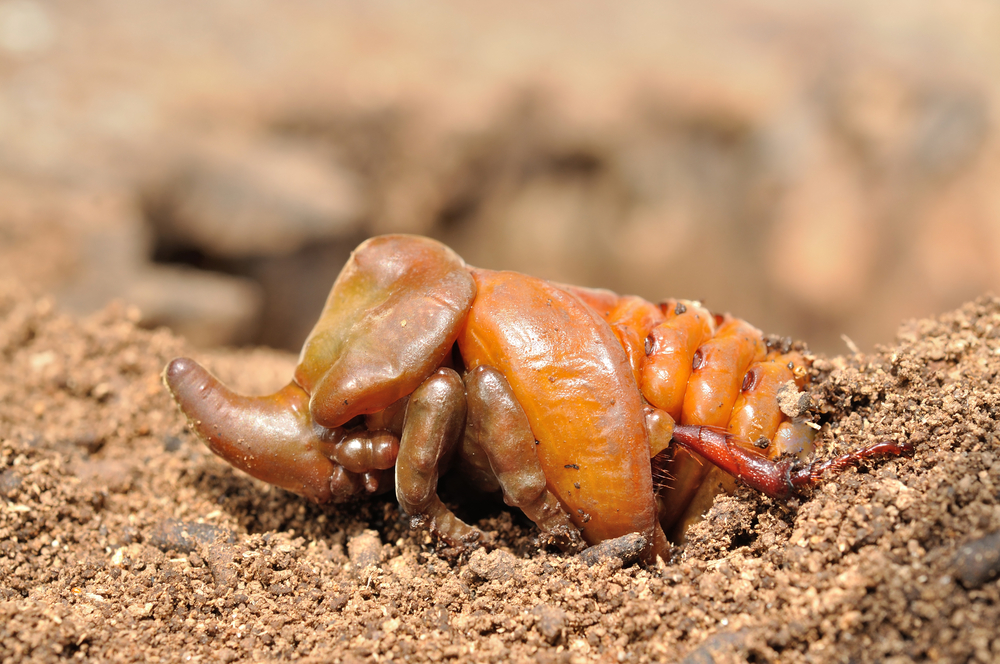There are over 300 known species of rhinoceros beetles, each with its own unique characteristics and distribution across the globe.
About
The Rhinoceros beetle, part of the subfamily Dynastinae within the family Scarabaeidae, stands out as one of the most remarkable and recognizable beetles in the Animal Kingdom. Belonging to the order Coleoptera, they share this vast and diverse classification with all other beetles, characterized by their hardened forewings and distinct life cycles.
Rhinoceros beetles are named after their most distinctive feature: the prominent horn-like structures on the males’ heads, reminiscent of a rhinoceros. These horns are used in battles over territory and mates and are a key feature in the beetles’ mating rituals.
These beetles are known for their impressive size, with some species being among the largest of beetles in terms of length and bulk. They inhabit a variety of ecosystems, including rainforests, deciduous forests, and even grasslands, adapting well to diverse environmental conditions.
Despite their formidable appearance, the rhinoceros beetle is generally not harmful to humans and is instead celebrated for their unique appearance and the incredible strength they display, being able to carry objects many times their weight. The life cycle and behavior of rhinoceros beetles, coupled with their ecological roles, make them a fascinating and distinctive group within the rich tapestry of life on Earth.
Physical Characteristics
Rhinoceros beetles are known for their impressive size and distinctive features. They have a robust body structure with a hard exoskeleton. The most striking characteristic is the horn-like projections on the males’ heads, from which they derive their name. These horns can vary in size and shape but are typically large compared to the beetle’s body, used for fighting with other males or for digging and burrowing. The females generally lack these large horns. The coloration of rhinoceros beetles can vary, with many species displaying black, gray, or greenish hues, often with a glossy or matte finish.
Physical characteristics of rhinoceros beetles include:
- Size:
- Length: Rhinoceros beetles are among the largest of beetles. They can range from about 1 to 6 inches in length (2.5 to 15 cm), with some of the largest species reaching or slightly exceeding these measurements.
- Width and Height: Their width and height are proportionate to their length, contributing to their overall stout and robust appearance.
- Weight:
- Rhinoceros beetles are quite heavy for insects. They typically weigh between 0.7 ounces and 3.5 ounces (20 to 100 grams). The heaviest can sometimes weigh more, making them some of the heaviest insects.
The remarkable size and distinctive horn-like structures of rhinoceros beetles make them a subject of fascination and often a symbol of strength and endurance in various cultures. Despite their formidable appearance, they are harmless to humans and play important roles in their ecosystems, such as decomposing plant material and being part of the food chain.
Reproduction
The reproductive cycle of rhinoceros beetles is quite fascinating and involves several distinct stages, from mating to the emergence of adult beetles. Here’s an overview of their reproductive process:
- Mating: The reproductive cycle begins when adult rhinoceros beetles emerge from the soil. Males use their prominent horns in combat to compete for females. After a successful courtship, mating occurs.
- Egg-Laying: Following mating, the female rhinoceros beetle lays her eggs in decomposing organic matter, such as leaf litter or decaying wood. The environment needs to be rich in nutrients and moist, providing a suitable habitat for the larvae to grow.
- Gestation Period: The gestation period, referring to the time it takes for the eggs to hatch, is relatively short. Depending on the species and environmental conditions, eggs typically hatch within a few weeks.
- Larval Stage: Once hatched, the larvae (grubs) enter the most prolonged and most vulnerable stage of their life cycle. They feed on the decomposing organic matter around them, growing rapidly. This larval stage can last from several months to a couple of years, depending on the species and environmental factors. During this time, the larvae go through several molts, shedding their exoskeleton to grow.
- Pupation: After reaching a certain size and maturity, the larvae pupate, forming a protective cocoon around themselves as they undergo metamorphosis. The pupal stage can last from a few weeks to several months.
- Emergence of Adults: The adult beetles eventually emerge from the pupal stage. Once they surface, their primary focus is on reproducing, starting the cycle anew.
The number of eggs laid by a female rhinoceros beetle can vary significantly among species, but it generally ranges from a few dozen to several hundred. However, not all eggs will successfully develop into adult beetles due to factors like predation, competition, and environmental conditions.
The lengthy developmental stage of rhinoceros beetles, particularly the larval phase, is crucial for their growth and the accumulation of energy reserves that will sustain them through their adult life, which is comparatively short and focused on reproduction.
Lifespan
The lifespan of rhinoceros beetles varies among species and is influenced by environmental factors, but they generally follow a pattern of a lengthy developmental phase and a shorter adult life. Here’s an overview of their lifespan in the wild and in captivity, as well as the primary threats they face:
Lifespan
- In the Wild:
- Larval Stage: This is the longest phase of the rhinoceros beetle’s life, often lasting 1 to 2 years, depending on the species and environmental conditions. During this time, the larvae feed on decomposing organic matter, growing and molting several times.
- Adult Stage: Once they emerge as adults, rhinoceros beetles have a relatively short lifespan, usually living for 3 to 6 months. Their primary purpose during this time is to mate and, for females, lay eggs. The adult beetles do not feed much and rely on the energy reserves accumulated during their larval stage.
- In Captivity:
- In captivity, where threats are minimized and conditions can be optimized, rhinoceros beetles can sometimes live slightly longer than in the wild, particularly in the adult stage. Consistent food supply, ideal temperature and humidity, and absence of predators contribute to their well-being and longevity.
Biggest Threats
- Habitat Loss: Deforestation and urban development can reduce the availability of decaying wood and organic matter, crucial for the larval development of rhinoceros beetles.
- Pesticides and Pollution: Chemical pollutants and pesticides can contaminate the beetles’ food sources and habitats, directly impacting their health and development.
- Climate Change: Changes in climate can alter the distribution of rhinoceros beetles and affect the availability of suitable habitats and food sources.
- Collection and Trade: Some species of rhinoceros beetles are sought after for collections or the pet trade due to their impressive size and appearance, which can lead to overharvesting and population declines.
Rhinoceros beetles play an important role in their ecosystems, particularly during their larval stage, by aiding in the decomposition of organic matter and contributing to nutrient cycling. Protecting their natural habitats and ensuring the availability of resources are crucial for maintaining their populations and the ecological balance of the areas they inhabit.
Eating Habits
Rhinoceros beetles have distinct eating habits that vary between the larval and adult stages, primarily focusing on plant material and decomposing organic matter.
- Larval Stage (Grubs):
- The larvae of rhinoceros beetles, often referred to as grubs, feed on decomposing organic matter. This includes rotting wood, leaf litter, and other decaying plant material.
- The rich, nutrient-filled environment of decaying organic matter provides the necessary sustenance for the larvae to grow and develop. They are equipped with strong mouthparts suited for chewing through tough materials.
- This feeding behavior is crucial not only for the growth of the larvae but also for the ecosystem, as it helps in the decomposition process and nutrient cycling.
- Adult Stage:
- Adult rhinoceros beetles have a varied diet but typically do not feed as much or as vigorously as they do during their larval stage.
- Many adult rhinoceros beetles consume sap, fruit, nectar, and plant fluids. They are particularly attracted to the sap of certain trees, which they can access using their strong mouthparts.
- Some species may also consume leaves, bark, and other plant parts, but this is generally less common than sap and fruit feeding.
- Method of Gathering Food:
- Rhinoceros beetles are primarily nocturnal and are most active during the night when they search for food. They use their sense of smell to locate food sources.
- The larvae feed within their nutrient-rich environment, consuming the decomposing matter around them.
- Adults may travel to food sources, using their strong legs and, in some cases, their ability to fly, to reach sap flows or ripe fruits.
The dietary habits of rhinoceros beetles play a significant role in their survival and growth, as well as in the ecological processes of decomposition and nutrient distribution within their habitats. Despite their formidable appearance, rhinoceros beetles are not considered pests and generally do not cause significant harm to healthy plants.
Uniqueness
Rhinoceros beetles are unique and fascinating creatures for several reasons, captivating people with their remarkable traits and behaviors:
- Impressive Size and Strength: Rhinoceros beetles are among the largest beetles in the world. Their strength is notable, too; they can carry objects up to 850 times their own weight, making them one of the strongest animals relative to their size.
- Distinctive Horns: The most defining feature of male rhinoceros beetles is their large, horn-like projections on the head and thorax, used in combat with other males over territory or mates. These horns resemble those of a rhinoceros, hence the name.
- Longevity and Development: The developmental cycle of rhinoceros beetles, particularly the larval stage, can be quite lengthy, with larvae feeding on decomposing wood and organic matter for several months to years before pupating and emerging as adults.
- Nocturnal Lifestyle: Rhinoceros beetles are primarily nocturnal, active at night when they feed, mate, and for some species, fly. Their activity during cooler, nighttime hours helps them conserve moisture and avoid predators.
- Flight Capabilities: Despite their bulky appearance, many rhinoceros beetles have wings and are capable of flight. They have a pair of hard, protective wing covers (elytra) that lift to reveal delicate flight wings underneath.
- Ecological Role: In their larval stage, rhinoceros beetles contribute to the breakdown and recycling of dead and decaying wood, playing an important role in nutrient cycling within their ecosystems.
- Cultural Significance: Rhinoceros beetles are admired in many cultures and are often kept as pets. In some regions, they are symbols of strength and endurance.
- Resilience: Rhinoceros beetles have a hard exoskeleton that provides protection against physical injuries and dehydration, contributing to their ability to thrive in various environments.
The unique combination of physical strength, distinctive appearance, ecological significance, and cultural impact makes rhinoceros beetles a subject of interest and admiration in the natural world. Their presence underscores the diversity and complexity of life on Earth.
FAQ’s
1. How many types of rhinoceros beetles are there?
2. What are some of the more popular rhinoceros beetle species?
Rhinoceros beetles are a diverse group with many fascinating species. Here are descriptions of 10 popular ones:
- Hercules Beetle: With long, curved horns, it’s one of the largest beetles globally, found in South America.
- Japanese Rhinoceros Beetle: Recognizable by its horned appearance, males display intense battles during mating season.
- Goliath Beetle: Among the heaviest insects globally, it inhabits African rainforests and has striking, vibrant colors.
- Eastern Hercules Beetle: Native to eastern North America, males possess impressive horns used in battles for mates.
- Atlas Beetle: Found in Southeast Asia, it’s known for its massive size and distinctive, curled horns.
- Oryctes Rhinoceros: A pest in coconut plantations, it’s native to Asia and recognized by its horned appearance.
- Golden-ringed Cicada Beetle: This striking species is found in Japan and is known for its metallic colors.
- Elephant Beetle: Native to the Amazon rainforest, it gets its name from its long, curved horns.
- Megasoma Elephas: Inhabiting Central and South America, it boasts impressive size and horned features.
- Xylotrupes Gideon: A large, horned beetle found in Southeast Asia, known for its vibrant colors and strength.
Related Family Species
Sources
- Britannica, Rhinoceros Beetle, https://www.britannica.com/animal/rhinoceros-beetle-insect-subfamily, retrieved January 2024.
- Burnie, David & Wilson, Don, Animal, Smithsonian Institute, Washington DC.
- Hickman et al, Integrated Principle of Zoology, McGraw Hill, Boston.






























































